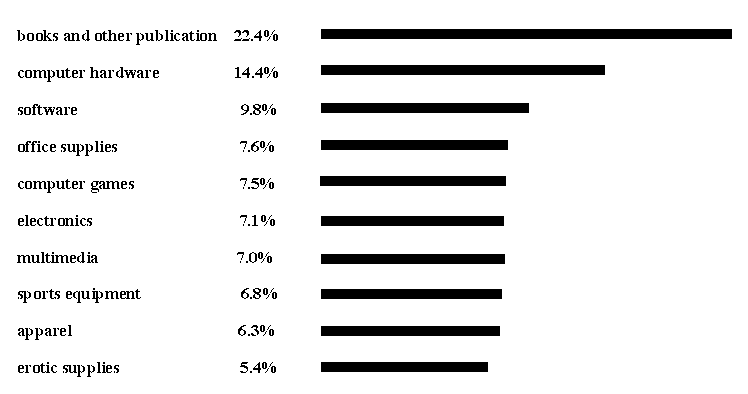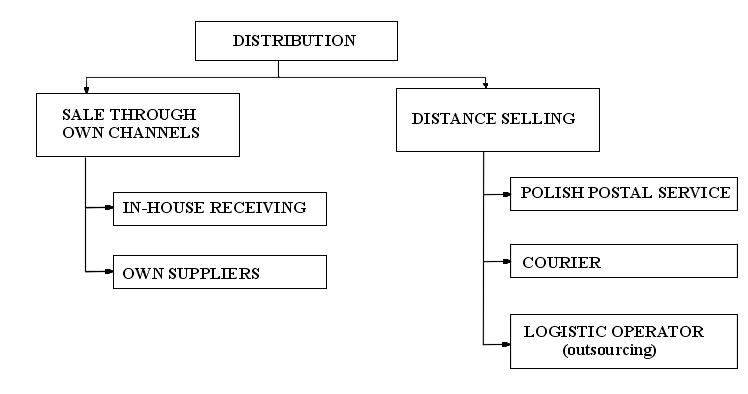|
|
|
ACCOMPLISHMENT OF SELECTED PACKAGE FUNCTIONS IN E-COMMERCE Andrzej Korzeniowski1, Jan Jasiczak2 ABSTRACT
The evolution of electronic commerce has had an impact on the functions of product packages. The authors have evaluated the protective, information provision, marketing and environmental values of packages used by online bookstores and computer hardware stores. Such packages rated above 4 (on a 5-point scale) in their protection and information provision value but fell short of the expected standards on their marketing and environmental protection performance. The article provides positive examples and causes of inadequate functionality. INTRODUCTION The partial departure from physical outlets selling consumer goods replaced by Business-to-Customer (B2C) vendors that take orders online whose goods are snipped to customers from manufacturing plants, wholesale outlets or their own warehouses, have substantially impacted the expected functions of packaging. At this stage of development of electronic selling in Poland, the companies that are best are those that sell small size products that are easy to package and ship. Most such companies are vertical outlets selling narrow but deep ranges of goods that are frequently damaged and are targeted at a special group of customers. At present, the goods offered by vertical and horizontal Internet-based vendors selling wide but shallow ranges of goods targeted at a broad spectrum of customers are as specified in Figure 1.
The nature of e-commerce requires that goods be packaged and distributed in many different ways. B2C enterprises often increase the external packages of goods already placed in their original unit packages by using external reinforcing and insulating systems (insulating spacers and pads). This turns away many environmentally conscious customers. Besides, such packages are often soiled, visually unattractive and damaged which has a further adverse affect on business. Goods are delivered to buyers (customers) via in-house distribution networks (in-house receiving and delivery) or by mail (via the Polish postal service, courier companies or third-party delivery). Most goods delivered through an in-house channel arrive undamaged and in intact packages. The Internet vendors relying on third-party delivery services often hear their customers complain about damaged or incomplete goods. Such damage typically occurs in transit and is due to defective packaging or reckless handling.
Most of the packages used in e-commerce are shipping packages expected to offer protective, information, marketing and environmental protection functions [Korzeniowski and Jasiczak 1998]. The primary role of packages in e-commerce is to protect goods from physical (mechanical and weather-induced), chemical and biological damage. Of particular importance here is the knowledge of the dynamic hazards commonly encountered in transportation. The key to selecting the right type of package is to identify the most fitting mode of transportation such as road, rail, sea or air and choose whether goods should be shipped as separate units or placed in collective pallet-mounted packages. Other considerations include the likelihood of mechanical damage resulting from long-term strain applied to packages when stacked in storage or during brief and perhaps neglectful handling or mishandling resulting from equipment failures [Korzeniowski and Wienskowski 2004]. Adequate protection of goods can be ensured by selecting proper packaging materials, package designs and packaging accessories. Packages should be designed so as to sufficiently protect goods from shifting within the package. Packaging accessories, such as insulating spacers and pads, should keep goods safe from shaking, vibration, and collision. Some of the most common spacers are made of solid or corrugated cardboard, whereas most anti-shock pads are made of foam-like plastics (polystyrene, polymethane), blister foil, paper strips, lignin, etc. For proper protection, packages need to come with adequately tight and durable closures that open and close easily, which is particularly important when goods do not meet customer expectations and need to be repacked and returned. The information function pertains to the type of information supplied to distributors or of interest to the customer. Having proper information displayed on packages saves time, money and effort as personnel compiling consignments can use it to quickly spot the right package and ship it to the customer. Package markings are also a significant success factor for efficient distribution, whether domestic or international. The critical feature here are handling instructions that indicate how the packaged goods are to be handled in storage and transit. General, information, caution and handling marks must be easy to see on the shipping package. In addition to printed marks, one may use self-adhesive labels and tags. Many of the packages used by retail and wholesale Internet-based vendors are weak on the marketing function. In the case of e-commerce where customers see packages only after having made a purchase, the role of packages is reduced to that of marketing and building company image. Marketing experts point out that the shipping packages used in electronic commerce should be the subject to extensive broad-based research [Gregor and Stawiszyński 2002]. Put in brief, in order for shipping packages to fulfill their environmental protection function [Gregor and Stawiszyński 2002]:
The most noteworthy of the existing eco-marks are those providing information on the type of packaging material used, recyclability, the content of recyclable material in package and participation in a given country's package recycling system. STUDY RESULTS The purpose of this article was to assess the extent to which the selected functions of the packages used in e-commerce are fulfilled by bookstores and computer hardware outlets. The protective function was evaluated in terms of the selection of proper packaging materials, package design and closures. The information function was assessed for the presence of handling marks and visibility of information notices. The criteria adopted for evaluating the marketing function were package appearance and the presence of company logo/mark and graphics. The environmental protection function was evaluated in terms of the presence of environmental marks and the homogeneity of the material used to produce a package. Our study covered eleven packages (cardboard boxes and paper bags lined with blister foil) used by electronic bookstores and twelve packages (large and small cardboard boxes) used by electronic sellers of computer equipment. All of the packages were assessed on a five point scale with the use of proper weights for each item assessed for a given function. Internet sellers pay particular attention to protecting the goods they ship from damage. The protective function, therefore, was fulfilled above four on our scale. Most of the packages satisfactorily protected goods from being doctored without leaving visible marks on the package (this role was best performed by polypropylene tapes bearing company logos). Computer hardware sellers protected their equipment with insulating spacers and pads as well as foil wrappings added for moisture protection. A sample compilation of our evaluations of the protective function of packages is summarized in Table 1.
Most of the examined packages adequately fulfill their information role. The role is best performed by the computer hardware packages used by Komputronik. The company's outlets run the software of a courier company and place, on their packages, properly completed shipping docu-ments, barcode labels and handling marks, hi a few cases, such information was found to be illegible due to the poor quality of postal forms (the copy that reaches the customer is illegible). Generally, the packages used in e-commerce in the analyzed fields were found to fulfill their marketing function quite poorly. Three percent of the packages shipped by Internet sellers have been previously used to package other goods and bore various inscriptions, came in torn card-board or with crimpled packaging paper. The majority of the outlets, however, used new cartons or cardboard boxes. In a few cases, the packages were wrapped in packaging tape in a visually unattractive manner. Most of the tapes used, however, bore color prints of company logo, store address and other information. Some of the goods came in packages supplied by courier companies which were aesthetically pleasing and bore quality drawings and inscriptions. These, however, advertised the courier company rather than the electronic seller. The environmental protection function was assessed as being by far least satisfactory. Most of the packages lacked ecological marks and indications of what material was used to make a given package. In addition, the vendors used excessive amounts of polypropylene packaging tape which greatly com-promised the recyclability of the packages. CONCLUSIONS Most of the packages used in e-commerce by bookstores and computer hardware vendors are strong on their protective and information functions which are crucial in that type of trade. Seller personnel focus on protecting the goods they package while neglecting the advertising potential and their company image and losing out on the marketing function which, in the face of growing competition, is shortsighted and harmful to their interests. The majority of the packages used by e-stores are esthetically poor and leave a bad impression on the customer. Reliance on used cartons and cardboard boxes is also poor marketing. The exceptionally low evaluations of the environmental protection function has resulted from insufficient environmental awareness among the staff of e-sellers as well as manufacturers. The lack of basic environmental marks and the use of multiple types of sealing and anti-shock materials have brought the environmental grades of many companies down even further in the eyes of some customers. A likely cause of the poor evaluations of the packages used by some e-stores is that they have not oper-ated long enough and have had limited experience in electronic commerce. They will be in a better position to develop better and more uniform solutions once they increase their sales volumes, something that has already been done for the packages used by Amazon.com and Komputronik, the vendor of electronic equipment. REFERENCES Gregor B., Stawiszyński M., 2002, E-Commerce. Branta, Bydgoszcz. Korzeniowski A., Jasiczak J., 1998, Funkcje opakowań w strategii jakości towarów. Opakowanie 9/1998. Korzeniowski A., Skrzypek M., 1999, Ekologistyka zużytych opakowań, Biblioteka Logistyka ILiM, Poznań. Korzeniowski A., Wienskowski K., 2004, Badania odporności opakowań tekturowych na narażenia występujace w transporcie. Logistyka 2/2004. REALIZACJA WYBRANYCH FUNKCJI OPAKOWAŃ WYKORZYSTYWANYCH W SPRZEDAŻY WYSYŁKOWEJ
STRESZCZENIE
Rozwój handlu w formie elektronicznej ma wpływ na funkcje pełnione przez opakowanie produktu. Autorzy oceniali ochronną, informacyjną, marketingową oraz ekologiczną wartość opakowań stosowanych przez księgarnie oraz sklepy oferujące części komputerowe, działające za pośrednictwem Internetu. Opakowania te zostały ocenione powyżej 4 (w skali 5-punktowej) w zakresie funkcji ochronnej i informacyjnej, natomiast wyraźnie nie zostały w pełni zaspokojone funkcje marketingowa i ekologiczna. W artykule przedstawiono pozytywne przykłady, jak również omówiono przyczyny zbyt niskiej funkcjonalności oferowanych produktów.
DIE ERFÜLLUNG DER AUSGEWÄHLTEN VERPACKUNGSFUNKTIONEN IM VERSANDHANDEL
ZUSAMMENFASSUNG.
Die Entwicklung des Versandhandels beeinflusst die Funktionsfähigkeit von Verpackungen. Die Erfüllung der Anforderungen hinsichtlich Sicherheit, Marketing, Information und Umweltschutz wurden in Internetshops, die Bücher und Computerteile anbieten, bewertet. Die Erfüllung der Anforderungen an Sicherheit und Information wurden über 4 Grade eingeschätzt (in 5-Graden Skala), aber Marketing- und Umweltschutzanforderungen wurden nicht erfüllt. In diesem Artikel wurden positive Beispiele und Ursachen der schlechten Funktionalität der genutzten Verpackungen präsentiert.
Prof. zw. dr hab. Andrzej Korzeniowski Prof. dr hab. Jan Jasiczak |
Copyright © 2005 LogForum, Wyższa Szkoła Logistyki, ul.E.Estkowskiego 6, tel. 061 852 95 55, 851 06 04, tel./fax. 061 851 06 03 |


